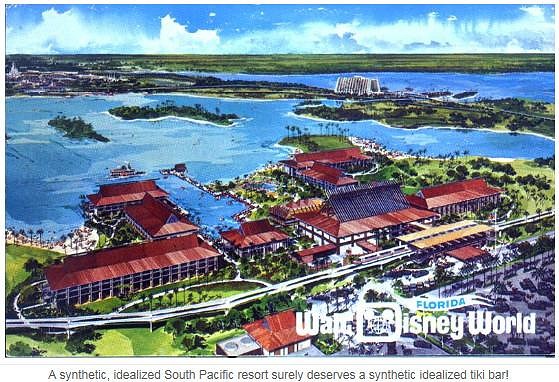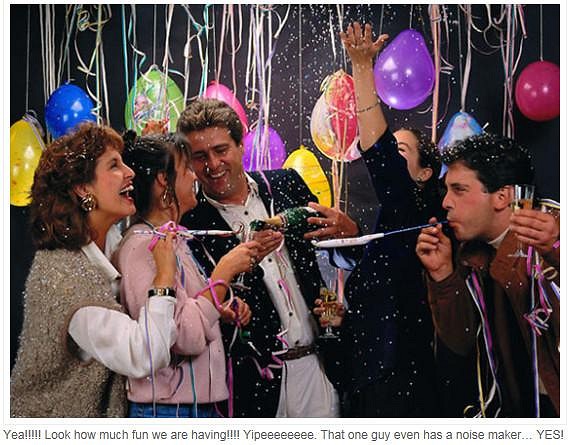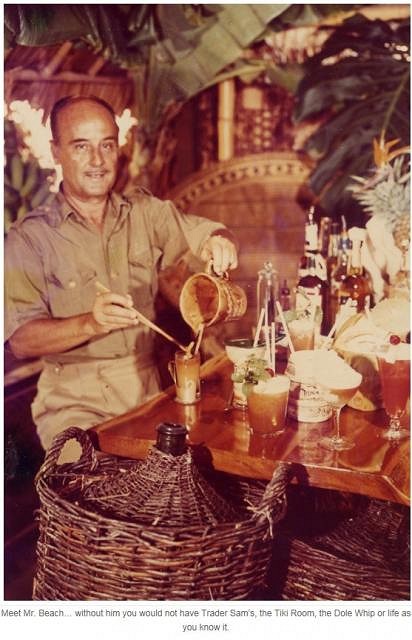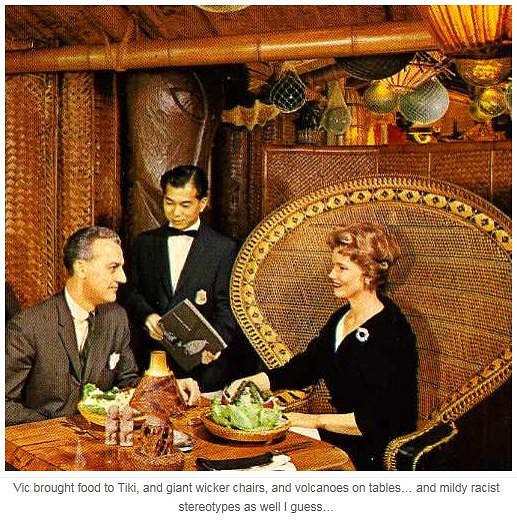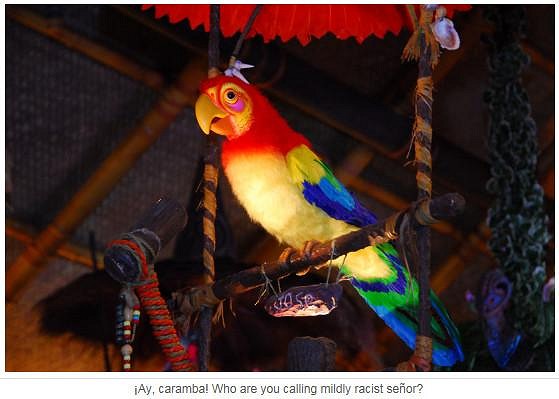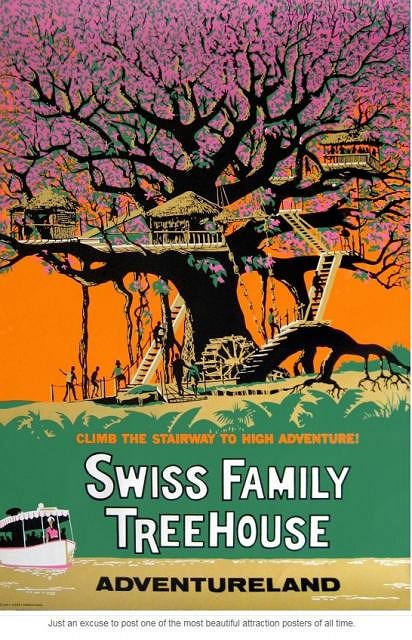Tiki Central / General Tiki / Trader Sam's - Orlando
Post #744961 by AceExplorer on Tue, Jun 16, 2015 12:40 AM
|
A

AceExplorer
Posted
posted
on
Tue, Jun 16, 2015 12:40 AM
MaukaHale, good article, thanks for posting. Here is the whole thing, with photos. Some of the photo captions may be hard to read due to how Tiki Central resizes uploaded images. Shared/copied here, with full credit to the author and web site, on the basis of the open invitation to "share this story" at the end of the article. The man who invented paradise: The secret history of Disney’s Tiki Room & Trader Sam’s Posted on June 12, 2015 by Teevtee Upon hitting the scene in 2011 The Disneyland Hotel’s Trader Sam’s Enchanted Tiki Bar became an instant hit. How could it not be? After all, it combines several things Disney does extremely well: heavily themed environments, clever special effects and deep back-story. Of course it also includes alcohol that curiously and inexplicably remains a major draw for many Disney fans (take a trip to Epcot during the food and wine festival for unfortunate, sloppy proof of this).
After enjoying several years as the only Disney Tiki bar (making many of us scratch our heads, bewildered as to why it took over 55 years for Disney to get around to building one), Trader Sam’s expanded this Spring with an all new location in the Polynesian Village Resort at Walt Disney World. The perfect and obvious choice for a Tiki bar now proudly has one (this time called Trader Sam’s Grog Grotto) and the crowds are proving once again that Tiki is back and perhaps poised to become even bigger.
Most people, even non-Disney fans, grasp that the parks inspired both Trader Sam’s locations. They clearly have an Adventureland feel to them (even sharing their names with the Jungle Cruise character) that would be obvious to anyone with rudimentary knowledge of the parks who wandered in. The West Coast version takes most of its inspiration from the Jungle Cruise and The Enchanted Tiki Room while the East Coast incarnation adds elements of the sadly defunct Twenty Thousand Leagues Under the Sea attraction.
In many ways, both locations have finally brought to fruition a concept Walt Disney had dating back to the early days of Disneyland. Over and over again, Imagineering has tried to combine Disney style show elements and exotically themed environments with dining establishments. Famously, the original concept for the Tiki Room started as a restaurant and dinner show before being scaled back to the current show (though you can enjoy Dole Whips inside the original Disneyland version).
The Blue Bayou restaurant in New Orleans Square layered rich environments on top of a dining location and many other Disney restaurants have taken that same path over the years (Epcot’s San Angel Inn, Disneyland’s Tahitian Terrance, The Explorers Club in Disneyland Paris and so on). Even Club 33, the members only, off limits to regular riff-raff, bucket-list worthy private club originally called for interactive animatronics to entertain diners. Yet somehow, over all of this time, Disney had never successfully combined themed environments, attraction-like show elements and dining all in one… they have come close but never quite nailed it.
The former Adventurers Club, on the also former Pleasure Island, came close. It did have animatronics and show elements in a richly themed environment, but it also had regulars who often took over the property and created an oddly exclusive feel, one in which regular folk were not in on the jokes and unwelcome (Kungaloosh!… oh shut up please). Beyond that, “forced fun” (a somewhat uniquely Disney experience where the pressure to have fun becomes so great that actual fun becomes impossible) would often overwhelm a visit.
The Adventurers Club tried so hard to be fun and irreverent and off beat and spontaneous that it usually failed to be any of these things. It did have a great environment and served drinks and perhaps some simple snacks… however it was basically a comedy club with a bar attached, not really what Walt was going for with his original concept of the Enchanted Tiki Room. With Trader Sam’s Disney scaled things down, made the room intimate and lavished layer upon layer of thematic details. It may be enjoyed on the simple premise that it is a Tiki bar or one can delve deeper and find hidden jokes and references to past and current attractions. They of course serve Tiki drinks in a variety of exotic and elaborate mugs (as is Tiki bar tradition) and enough food that a group could eat a meal there. Furthermore, there are legitimate show elements happening all around you. Ordering specific drinks will trigger special effect sequences that range from erupting volcanoes to sinking ships. Trader Sam’s is fun, it is for the most part inclusive and is as close to Walt Disney’s concept of the Tiki Room as we are likely to get.
Considering that you are reading this on a website devoted to the small details of the Disney parks you likely know all of this already, in fact you have probably been to one or perhaps both locations. Maybe you have a souvenir Zombie mug sitting on your desk, or maybe you have custom built shelves to hold your complete collection of Tiki mugs (we are not judging you). But few fans have really thought about why any of this exists in the first place, why was Walt so intrigued by Polynesian and Tiki themes? It may have taken six decades to get here but where did it all begin?
Mid-Century America was an interesting time and place. Technology was delivering experiences never before dreamed of. The United States enjoyed an economic and cultural leadership role but also toiled under the “Red Scare” and newfound pressures to move to the suburbs locked into a 30-year mortgage. It was both an exciting and uncharted time filled with humor and a certain synthetic feel. Polyester was better than cotton, frozen food was better than fresh, Monsanto was paving the way to the future and artificial turf was going to replace lawns everywhere: it was the American dream! Disneyland was created at perhaps the only time in history that it could have been, it is very much a reflection of the popular culture of the time. As much as we hate it when Disney tries to be “hip” and “edgy” the truth is that Disneyland has ALWAYS been tied into the zeitgeist. The mid-fifties was a time when multiple trends were emerging within pop culture. Westerns were at their peak (thus Frontierland), the googie architectural movement with its atomic age shapes and space age excitement was in high gear (fueled by the space race over the next 15 years) and so Tomorrowland was born. There was also a fascination with exotic locales and cultures that were foreign to most Americans; the Tiki movement exemplified this and Adventureland became Disneyland’s physical manifestation of it. What later became ironic, kitschy or at worst; tacky, was in fact a hugely popular cultural movement that covered the entire country and lasted over 40 years.
The Tiki movement started in California in 1933 when Ernest Raymond Beaumont Gantt (a young unemployed former prohibition era bootlegger) took the nom de plume of Donn Beach (he later legally adopted this name) and opened up Don the Beachcomber. It was a small bar located in an old tailor’s shop in Hollywood. Decorated with bamboo, thatch roofs and tropical knick-knacks picked up form his island travels, it became an instant smash. Don expanded to a larger location and soon the Hollywood elite (such as Walt Disney) were hanging out drinking the rum and fruit juice cocktails Don concocted with an eye on escapism. Even though these drinks were based on Caribbean liquor and had absolutely nothing to do with the South Pacific (and the actual use of Tiki statues would not come for many years to follow) Tiki as we know it was born.
This was a time when air travel was just becoming democratized, it was just starting to reach a point where an average person could travel great distances. Previously you may be born in Kansas, grow up in Kansas and die in Kansas. Kansas was your world, Kansas was what you knew… the idea of beaches and palm trees and untamed native girls was as far away as the dark side of the moon. Visiting Don’s bar was like traveling across the globe to a fantastic shangri la you never knew existed, or perhaps knew could only exist in a place like this.
Don served in the Army during World War II and his wife took over and expanded the chain of bars when he was away (16 locations by the time he returned). When the war ended many soldiers came home from the Pacific theater suppressing the horrors they experienced and instead telling stories of uncharted beaches, topless girls and exotic food and drink. The country and the folks who lived and died in Kansas were fascinated. The fact that these tales were mostly fictional and bastardized hodgepodges of Oceanic, Caribbean and African cultures (plus a good heap of pure fantasy) mattered less than the fact that they brought escapism, fun and relief from a long period of conflict. Looking at Tiki bars to learn about Polynesian culture would be like looking at the Country Bear Jamboree to learn about the mating habits of grizzlies; it was all make believe.
The world was getting smaller and these far-off fantasies were tantalizingly within grasp. Hawaii joined the union as our 50th state and interest in Tiki was at an all time high. The parallels of what was happening in popular culture and what Disney was doing, both in entertainment and eventually his park, cannot be overstated.
Many others joined the Tiki craze, most notably Victor J. Bergeron who opened a series of Trader Vic’s bars and restaurants. Vic brought a culinary element to Don’s mixology and while the two remained amicable rivals throughout their careers they also built upon each other’s successes. Soon patrons all over the world were enjoying “exotic” tropical dishes (really Americanized and homogenized Cantonese recipes) while sipping now classic rum drinks (such as the Mai Tai) in heavily themed, dramatically presented environments. Grand Tiki bars often had a sense of drama not found in your average drinking hole. Dimly lit and often isolated in the basement of hotels (the windowless locations allowed complete control of the environment), many featured waterfalls, grottos and flickering torches. Tribal drum beats, skulls and exotic flora and fauna were highlights. These were in essence Walt’s vision of the Tiki Room sans the singing birds twenty or thirty years before the Tiki Room would see the light of day. They were the prototypes for Adventureland and themed entertainment in general decades before Disneyland defined the genre.
The country fell in love; Donn’s little creation became a national obsession. Tiki was not contained simply to bars, by the mid-century it was everywhere; apartment buildings, hotels, bowling alleys, shopping malls, miniature golf, fashion and entertainment. Hula hoops, Hula lamps, Hula dolls and more. Movies such as South Pacific, Blue Hawaii and even Swiss Family Robinson swept audiences away to tropical paradise. Hawaiian shirts were worn without a trace of irony. Home furnishings were fabricated from bamboo and coconut shells. Exotic lounge music (known as exotica and mixing Oceanic and African influences) topped the charts.
Even entire amusement parks were created to celebrate the newly en vogue cultural direction. Tiki enjoyed great longevity running from the mid 1930’s through the 1970’s before finally drifting into the world of kitsch by the 1980’s and off the map altogether in the 90’s and early 2000’s.
Walt Disney’s Enchanted Tiki Room opened during the latter part of the trend in 1963. Tiki was neither invented by Disney nor even re-invented by Disney, it was simply a part of a much larger movement, and it was Disney’s attempt at being “hip” and “edgy” for those times. To be fair Disney did put a spin on it by taking the traditional décor of Tiki and upping the ante with animatronics and theatrical lighting effects. But like much of American culture both Disney, and the Tiki movement in general, stole cultural symbolism and artifacts and transformed them into entertainment for the masses. Many Tiki statues served significant religious roles to cultures not at all understood by the white guys who appropriated them, thus were the ways of mid-century America. Nevertheless the Tiki trend was one of the most significant and widespread of our pop-culture history.
By the time the seventies came around, Tiki was old enough that those who were interested in it during their youth had kids of their own… those offspring would often look at what their parents thought of as being cool and fun and (in the case of Tiki) escapism, and find it tired, tacky and embarrassing. Tiki was nearing its end. The Vietnam War changed the country’s view of the tropics, palm trees and jungles no longer meant paradise. At this same time American culture was shifting to more realistic and gritty forms of entertainment, cop movies displaced romantic tropical tales at the local theater and elaborately embellished fruity drinks were suddenly passé (not to mention that over the decades they declined in quality from carefully balanced creations to straight from a can syrupy sweet disasters).
Interestingly, Disney was in the midst of building another elaborate homage to Tiki and Polynesia: The Polynesian Village Resort. When Walt Disney World opened in 1971 the “Polynesian” as it was commonly known was one of the original hotels. Complete with Tiki carvings, torches, rain forests, luaus and waterfalls the hotel serves as a last great tribute to the Tiki movement and, in typical Disney fashion, was created just as the trend was ending: Disney never has been good at being hip and edgy after all. Despite all of its many nods to Tiki the Polynesian never had an actual Tiki bar… perhaps even Disney knew the ride was over at that point?
Coming full circle, the Polynesian Village now enjoys it’s own version of Trader Sam’s and Tiki is making a major comeback. Super trendy bars in San Francisco (Smugglers Cove), London (Mahiki), Chicago (Lost Lake, Three Dots and a Dash), New York (PKNY) and elsewhere have spearheaded a renaissance. The kids of the kids who rebelled against Tiki are now embracing it once again, appreciating the creativity and the style the originals brought to the scene. But how are the two Disney versions? After all this time do they capture the spirit of Tiki?
The answer is a definite “maybe”. They are at once classic Tiki and totally anti-Tiki… they are Tiki bars as only Disney could do them. Stay tuned for part two when we visit both versions of Trader Sam’s and see what they are all about. In the meantime raise a glass to dear old Don the Beachcomber and thank him for all the fun you have had over the years. Without Donn there is no Tiki, no national obsession with Polynesia, no Adventureland and ultimately, perhaps, no Disneyland. |


